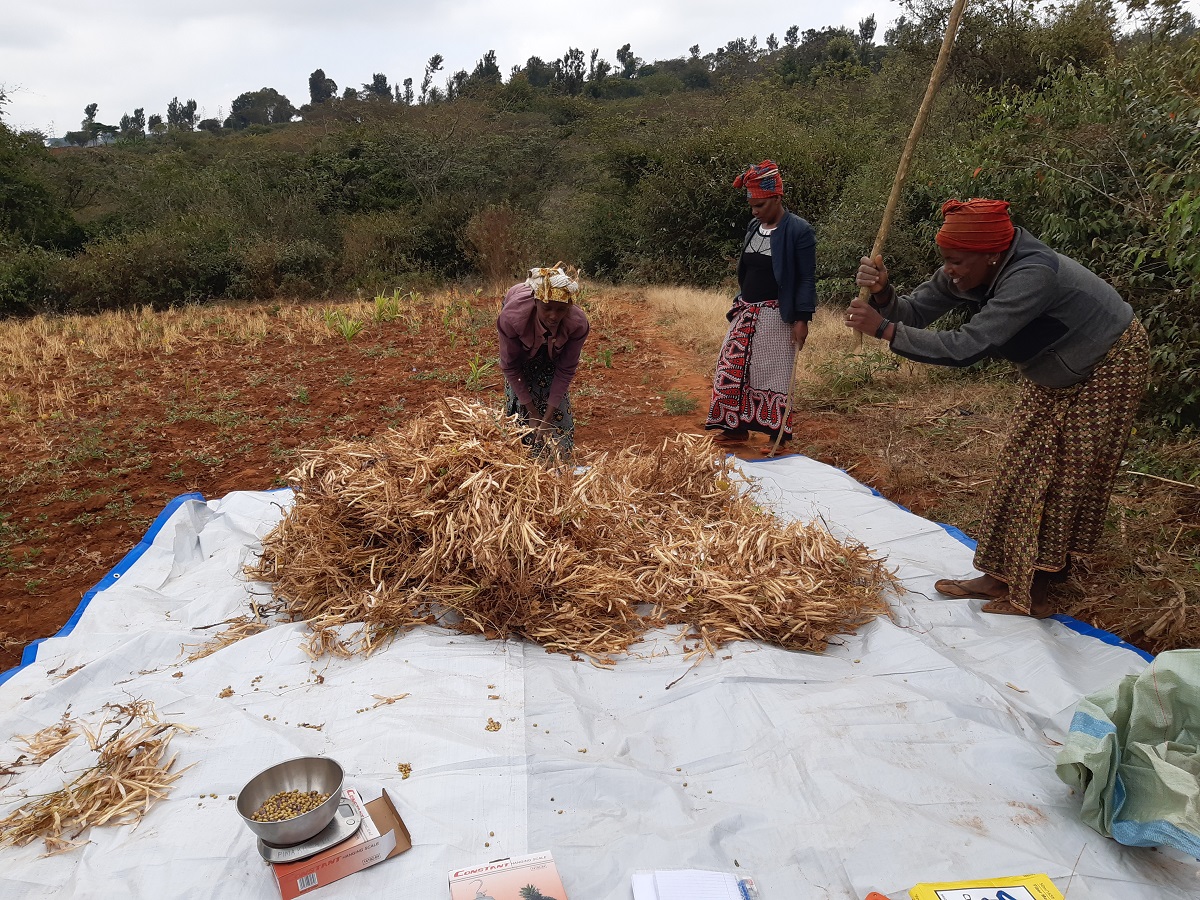
Producing enough to feed their families is a back-breaking reality for millions in small-scale farming households across sub-Saharan Africa (SSA) and beyond. For example, cereal and legume grain producers have to store sufficient seed from the previous harvest, invest in land clearing, planting, manage pests and diseases, and control weeds using basic tools such as hoes and machetes.
After harvesting, farmers transport their crop home, spread it out to dry – guarding it against wildlife and livestock and unexpected rain showers – and then thresh, sort and store, sometimes after mixing with a protectant to deter attack by insects and other pests. Usually, women then process the grains by pounding and/or milling them before cooking for their households. At every stage, losses occur, which can be quite high when added together – a loss of valuable food but also of the resources used to produce the crop, including land, labour, and other inputs. Reducing postharvest losses (PHLs) is important for smallholder households and has been prioritised under the African Union’s Malabo Declaration and the Sustainable Development Goal 12.3. However, reducing PHLs requires understanding the scale of losses, where and why they occur, and the loss-reducing interventions which different actors can use.
A team of NRI researchers, including Drs Tanya Stathers, Aditya Parmar and Gideon Onumah, are playing a pivotal role in PHL reduction in Africa. They are collaborating with the University of Zimbabwe, AKM Services, the European Commission’s Joint Research Council, among others, and a network of postharvest and agricultural information experts from across SSA on the African Postharvest Losses Information System (APHLIS) project. The APHLIS team has built a science-based system of PHL estimation for different stages in target value chains. The estimates are computed through screening literature, creating a database of high-quality measured PHL data, combining it with datasets on subnational level crop production, weather conditions, storage duration, pest incidence, marketing systems and PH-technology used. Losses are reported at national and provincial levels across SSA via the APHLIS website – www.aphlis.net – an open-access, user-friendly information system. It covers estimates of volumes lost and as percentages of total output; projections of their financial and nutritional values and impacts – offering a crucial basis for decisions on interventions and investments by policy and investment decision makers.
In the current phase of the project, known as APHLIS+, one of the work packages has involved the NRI team collaborating with researchers in Benin, Togo, Tanzania, Nigeria and Uganda in piloting PHL measuring systems for bean, cowpea, groundnut, cassava and sweetpotato. The work is widening the knowledge base to understand the losses that occur during activities other than storage and for a range of important food crops beyond the cereals. This work is expected to support strategic targeting of PHL reduction investments and to improve capacity to robustly monitor and report on progress in achieving PHL reduction goals.

